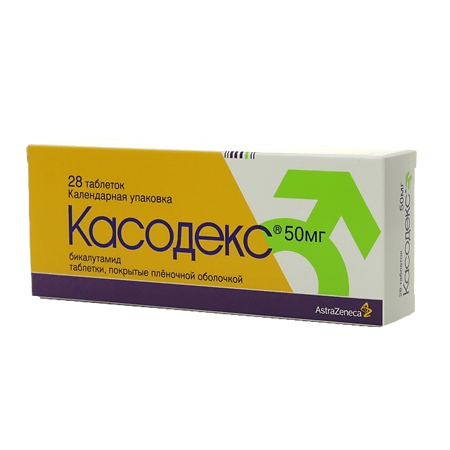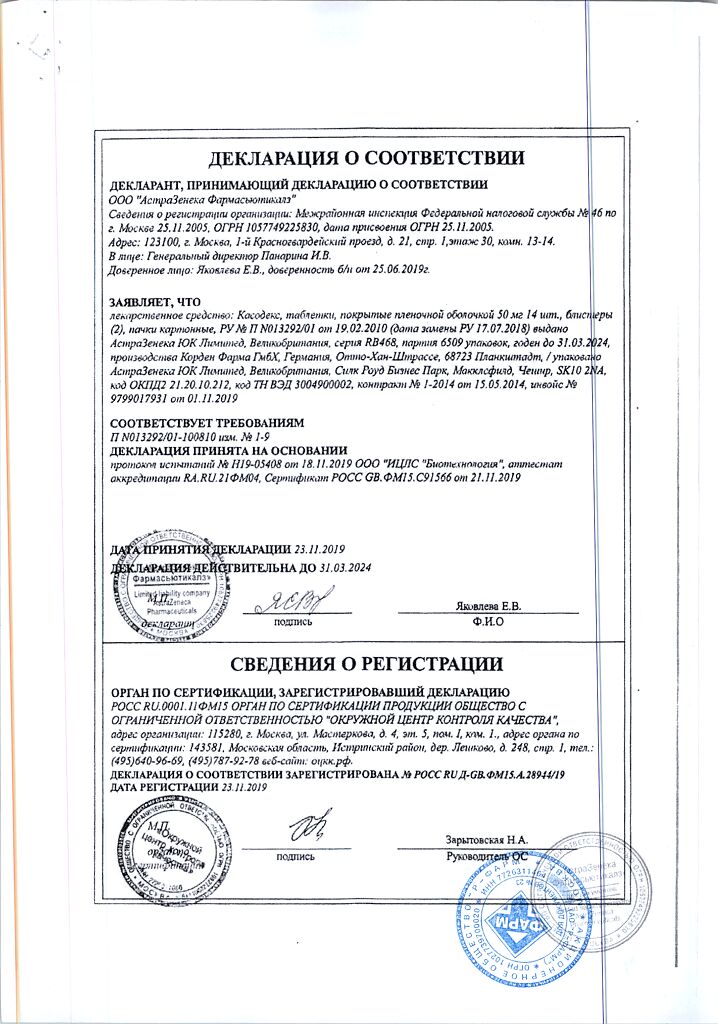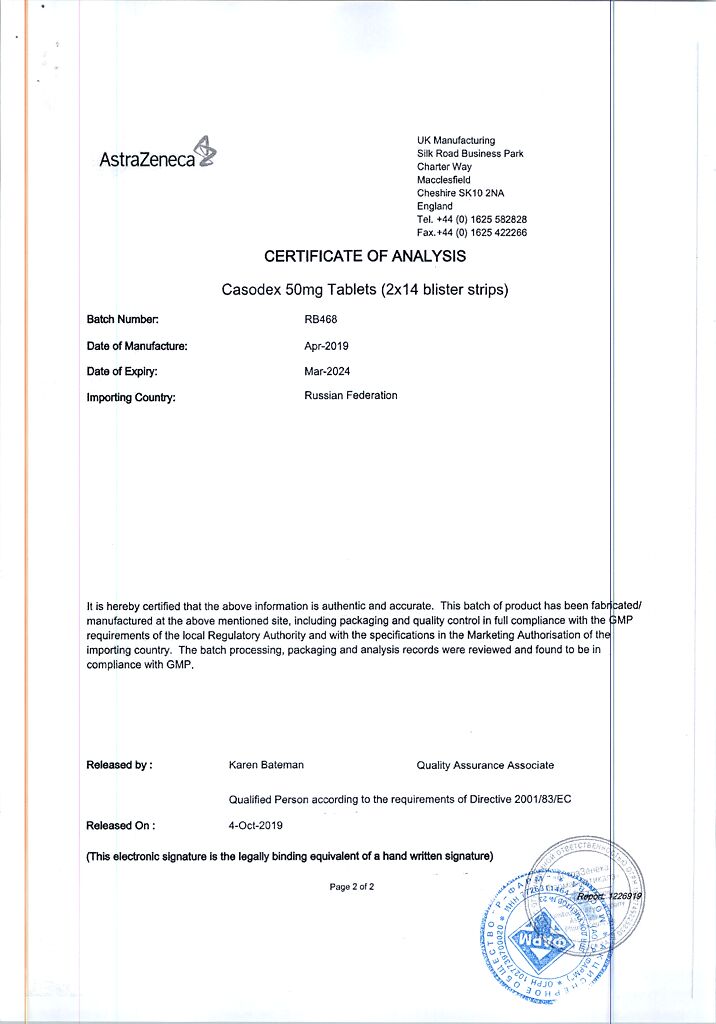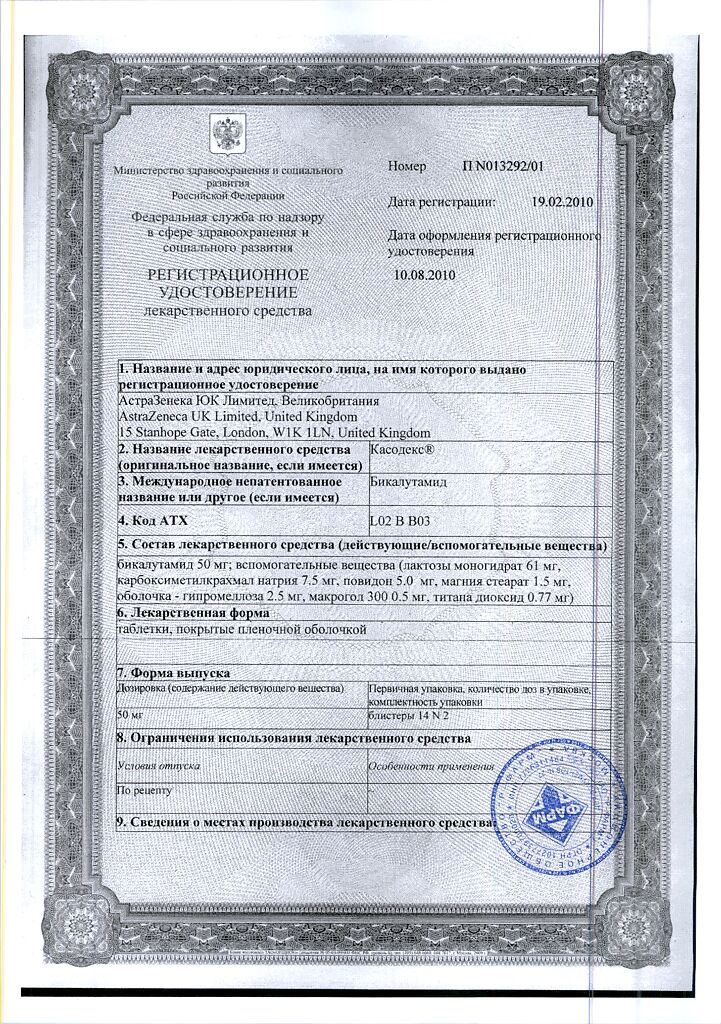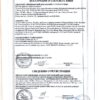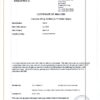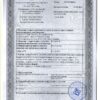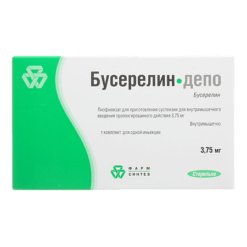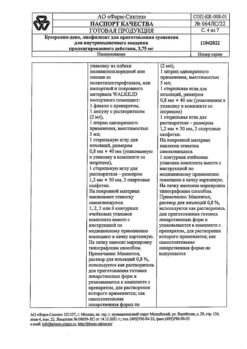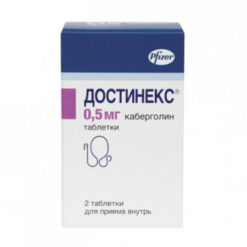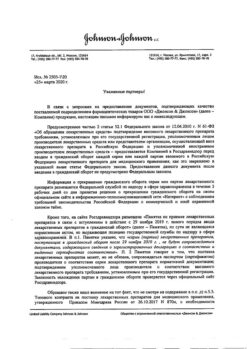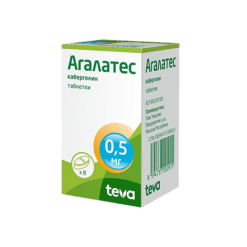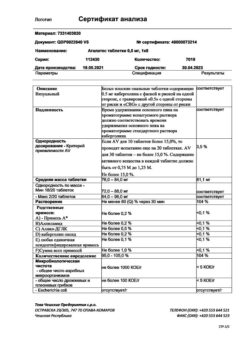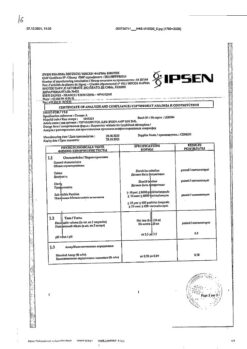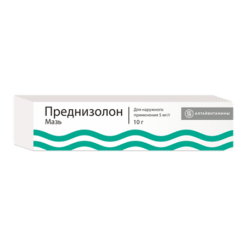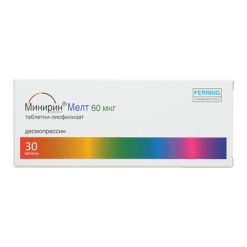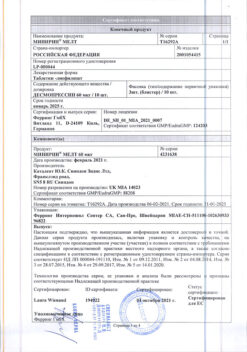No products in the cart.
Casodex, 50 mg 28 pcs
€59.93 €49.94
Description
Casodex is an antitumor, antiandrogenic.
Pharmacodynamics
The anti-androgenic nonsteroidal drug. It is a racemic mixture, with predominantly the (R)-enantiomer having antiandrogenic activity. The drug has no other types of endocrine activity. Casodex® binds to androgen receptors and, without activating gene expression, suppresses the stimulating effect of androgens. This results in regression of prostate neoplasms.
In some patients, discontinuation of Cassodex may lead to the development of clinical antiandrogen withdrawal syndrome.
Pharmacokinetics
Intake
After oral administration is quickly and completely absorbed from the gastrointestinal tract. Concomitant ingestion does not affect absorption.
Distribution
Daily ingestion of 50 mg Cassodex has a Css (R)-enantiomer in plasma of about 9 µg/mL. At equilibrium, about 99% of all circulating enantiomers in the blood are the active (R)-enantiomer. When Casodex is taken daily, the plasma concentration of the (R)-enantiomer is increased about 10-fold due to a long T1/2, which allows Casodex to be taken once daily. Binding to plasma proteins is high (for the racemic mixture 96%, for the (R)-enantiomer 99.6%).
Metabolism
It is intensively metabolized in the liver by oxidation and formation of conjugates with glucuronic acid.
Excretion
The metabolites are excreted with urine and bile in approximately equal proportions. The (S)-enantiomer is eliminated much faster than the (R)-enantiomer, the T1/2 of the latter is about 7 days.
Pharmacokinetics in special clinical cases
The pharmacokinetics of (R)-enantiomer is not affected by age, impaired renal function, mild and moderate hepatic function. There is evidence that in patients with severe hepatic impairment the elimination of (R)-enantiomer from plasma is delayed. Cumulation of bicalutamide in the body may be observed in patients with moderate to severe hepatic impairment.
Indications
Indications
Advanced prostate cancer (in combination with a GnRH analogue or surgical castration).
Pharmacological effect
Pharmacological effect
Casodex – antitumor, antiandrogenic.
Pharmacodynamics
Antiandrogenic non-steroidal drug. It is a racemic mixture, and the (R)-enantiomer has predominantly antiandrogenic activity. The drug does not have other types of endocrine activity. Casodex® binds to androgen receptors and, without activating gene expression, suppresses the stimulating effect of androgens. As a result, regression of prostate tumors occurs.
In some patients, discontinuation of Casodex may lead to the development of clinical antiandrogen withdrawal syndrome.
Pharmacokinetics
Suction
After oral administration, it is quickly and completely absorbed from the gastrointestinal tract. Concomitant food intake does not affect absorption.
Distribution
When taking Casodex daily at a dose of 50 mg, the Css (R) enantiomer in plasma is about 9 μg/ml. At steady state, about 99% of all enantiomers circulating in the blood are the active (R)-enantiomer. With daily administration of Casodex, the concentration of the (R)-enantiomer in plasma increases approximately 10 times due to the long T1/2, which allows taking Casodex 1 time per day. The binding to plasma proteins is high (96% for the racemic mixture, 99.6% for the (R)-enantiomer).
Metabolism
Intensively metabolized in the liver by oxidation and the formation of conjugates with glucuronic acid.
Removal
Metabolites are excreted in urine and bile in approximately equal proportions. The (S)-enantiomer is excreted from the body much faster than the (R)-enantiomer, the T1/2 of the latter is about 7 days.
Pharmacokinetics in special clinical situations
The pharmacokinetics of the (R)-enantiomer are not affected by age, renal impairment, or mild to moderate liver dysfunction. There is evidence that in patients with severe liver dysfunction, the elimination of the (R)-enantiomer from plasma is slowed down. In patients with moderate to severe liver dysfunction, accumulation of bicalutamide in the body may occur.
Special instructions
Special instructions
The drug is metabolized in the liver. Given the possibility of slower elimination of bicalutamide and accumulation of bicalutamide in patients with severe liver dysfunction, it is advisable to periodically evaluate liver function. Most changes in liver function occur during the first 6 months of treatment with Casodex.
Casodex® should be used with caution in patients with moderate to severe hepatic impairment.
Severe liver dysfunction is rare with the use of Casodex (fatal cases have been reported).
If significant changes in liver function develop, Casodex should be discontinued.
In patients with disease progression due to rising prostate-specific antigen (PSA) levels, discontinuation of treatment with Casodex should be considered.
Given the possibility of Casodex inhibiting the activity of cytochrome P450 (CYP3A4), caution should be exercised when prescribing Casodex with drugs that are predominantly metabilized by CYP3A4.
Decreased glucose tolerance has been observed in patients taking GnRH agonists. This effect may lead to the development of diabetes mellitus or decreased glucose tolerance in patients with diabetes mellitus. Therefore, blood glucose concentrations should be monitored in patients taking Casodex® and GnRH agonists.
Impact on the ability to drive vehicles and other mechanisms that require increased concentration
When using Casodex, drowsiness and dizziness may occur, and therefore care should be taken when driving vehicles or other moving mechanisms.
Active ingredient
Active ingredient
Bicalutamide
Composition
Composition
1 tablet contains:
Active substance:
bicalutamide 50 mg;
Excipients:
lactose monohydrate,
sodium carboxymethyl starch,
povidone,
magnesium stearate,
purified water (evaporated during the production process);
Shell composition:
hypromellose, macrogol 300, titanium dioxide, purified water.
Pregnancy
Pregnancy
Casodex® is contraindicated in women and should not be prescribed to pregnant women or during lactation.
Contraindications
Contraindications
Simultaneous use with terfenadine, astemizole, cisapride;
hypersensitivity to bicalutamide and other components of the drug;
Casodex is not prescribed to women and children.
With caution: use Casodex® in patients with impaired liver function, lactose intolerance, lactase deficiency and glucose/galactose malabsorption syndrome.
Side Effects
Side Effects
Casodex® is well tolerated by most patients, and only in rare cases does it have to be discontinued due to side effects caused by it.
The pharmacological action of Casodex may cause the following side effects.
Very common (> 10%): gynecomastia (may persist even after cessation of therapy, especially if the drug is taken for a long time), breast tenderness, hot flashes.
Common (≥1% – <10%): hot flashes*, anemia*, dizziness*, abdominal pain*, constipation*, nausea*, peripheral edema*, hematuria*, hepatotoxicity, transient increase in liver transaminases, cholestasis and jaundice (the described changes in liver function were rarely assessed as serious, were transient in nature and completely disappeared or decreased despite continued therapy or after discontinuation of the drug), decreased appetite, decreased libido, depression, drowsiness, dyspepsia, flatulence, alopecia, hirsutism or hair regrowth, dry skin, itching, erectile dysfunction, chest pain, weight gain.
Rarely (≥ 0.1% – < 1%): hypersensitivity reactions, angioedema, urticaria, interstitial pulmonary disease (fatal cases reported), heart failure.
Very rare (≥ 0.01% – < 0.1%): liver failure (fatal cases reported).
* – with the simultaneous use of Casodex and GnRH analogues, side effects were often observed.
Interaction
Interaction
There are no data on pharmacodynamic or pharmacokinetic interactions between Casodex and GnRH analogues.
In vitro studies have shown that the (R)-enantiomer of Casodex is an inhibitor of CYP3A4, and to a lesser extent – CYP2C9, CYP2C19, CYP2D6. In clinical studies using phenazone as a marker of cytochrome P450 activity, the potential ability of Casodex to interact with other drugs was not detected. However, when using Casodex for 28 days while taking midazolam, the AUC of midazolam increased by 80%.
The simultaneous use of Casodex with drugs such as terfenadine, astemizole and cisapride is contraindicated.
Caution should be exercised when prescribing Casodex concomitantly with cyclosporine or slow calcium channel blockers. It may be necessary to reduce the dose of these drugs, especially in the case of potentiation or the development of adverse reactions. After starting the use or discontinuation of Casodex, it is recommended to carefully monitor the concentration of cyclosporine in the blood plasma and the clinical condition of the patient.
Casodex® and drugs that inhibit microsomal liver enzymes (for example, cimetidine, ketoconazole) should be used with caution. The use of these combinations may lead to increased plasma concentrations of bicalutamide and possibly an increased incidence of adverse reactions.
Casodex® enhances the effect of indirect coumarin anticoagulants (including warfarin), because may displace these drugs from their protein binding sites. It is recommended to regularly monitor prothrombin time when prescribing Casodex to patients receiving indirect coumarin anticoagulants.
Overdose
Overdose
Cases of overdose in humans have not been described.
There is no specific antidote, so symptomatic therapy is carried out if necessary.
Dialysis is ineffective because bicalutamide is tightly bound to proteins and is not excreted unchanged in the urine.
General supportive therapy and monitoring of vital body functions are indicated.
Storage conditions
Storage conditions
At a temperature not exceeding 30 °C
Shelf life
Shelf life
5 years
Manufacturer
Manufacturer
Corden Pharma GmbH, Germany
Additional information
| Shelf life | 5 years |
|---|---|
| Conditions of storage | At a temperature not exceeding 30 °C |
| Manufacturer | Corden Pharma GmbH, Germany |
| Medication form | pills |
| Brand | Corden Pharma GmbH |
Related products
Buy Casodex, 50 mg 28 pcs with delivery to USA, UK, Europe and over 120 other countries.

